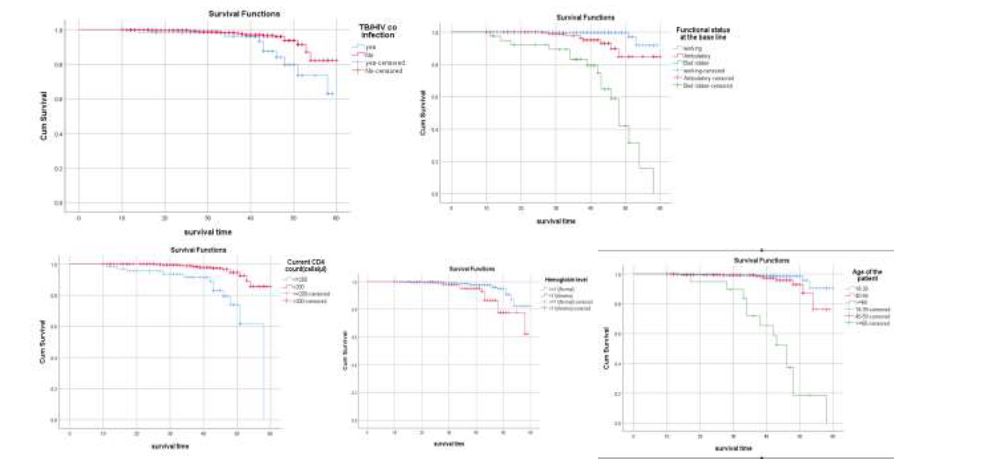Survival and Predictors of Mortality among HIV-Infected Adults Receiving Art in Hawassa Comprehensive Specialized Hospital, Sidama Regional State, Ethiopia
Main Article Content
Abstract
Background: Having claimed lives, HIV/AIDS is still a significant global public health concern. Antiretroviral therapy (ART) is now widely available, and this rapid expansion of access is dramatically improving HIV epidemic survival rates worldwide.
Objectives: The purpose of this study was to identify the mortality risk factors and survival status of ART patients attending Hawassa Comprehensive Specialized Hospital in 2020.
Methods: All patients seen between January 2015 and December 2019 were examined in a five-year retrospective cohort study. SPSS 25.0 was used to analyze the data. Based on explanatory variables, the Kaplan-Meier Log-rank model was used to assess the survival time of ART patients. To find the independent determinants of mortality, bivariate, and multivariate Cox proportional hazards regression models were used.
Result: Overall survival probability of ART patients was 74%. The death incidence rate of 0.135 per 100 person-years with medial survival of 34 months. Hemoglobin level (HR=2.38;95% CI= 3.3-6.3); WHO clinical stage III and IV (HR=3; 95% CI= 2.2-9.5, p=0.04); Age >=60 (HR=1.6; 95% CI=1.3–2, p=0.04); Functional status bed ridden (HR=3.1; 95% CI=1.2-9.4, p=0.04) were independent predictors of mortality among RVI patients.
Conclusion: In this study, the survival rate of ART patients was low in comparison to trials done in rich countries. Close follow-up and monitoring should be given to patients who are anemic; WHO advanced clinical stage; old age, functional status bedridden needs special attention.
